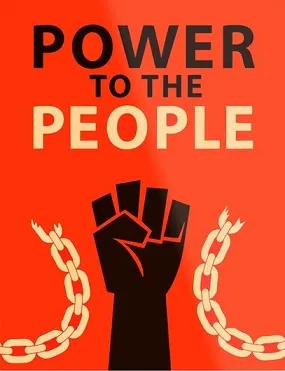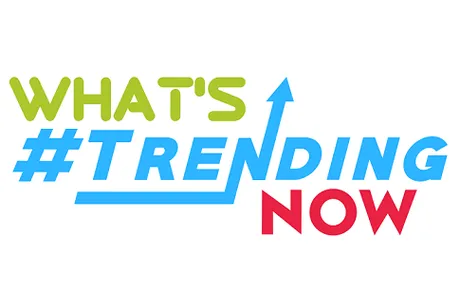
In reference to The Race To The Bottom it becomes quite obvious to me that the most popular Frontends of Steem will be the ones that give the most power to its users. Why use a frontend that consolidates all the power for itself? This simple fact has many interesting implications.
How many different kinds of users on Steem are there? Many would say there are content producers and consumers in addition to curators. I would say that there is so such thing as a curator on Steem. Curation was artificially generated by the Steemit frontend, and now that job has been completely undermined through streamlined vote buying services.
That leaves producers and consumers, of which most Steem users are both. However, because content is free (and monetizing it isn't really an option) that leaves us in a situation where the producers of innovation and creativity on the platform have to hope that they will be tipped altruistically. That is of course unless they are able to develop their own dapp or token that generates income directly.

In reality the networks being created here often promote tipping users over content. It's a lot easier to make friends and throw out upvotes to people you trust without ever having to examine the content in the first place (or simply by skimming it or reading the title.
However, I'm now grossly off topic. The subject at hand revolves around identifying the centralized power structures that Steemit and other frontends are clinging onto when these features clearly belong in the hands of the decentralized community at large.

Trending
The most painfully obvious failure of Steemit.com and every other frontend I've experienced is the trending tab. The heuristics of this completely unevolved system practically slap us in the face on the daily. Bad actors have been given years to adapt and exploit the trending tab because it never gets any smarter. Rather than try to fix the problem Stinc continues to half ass their current project and move on to the next one (although I am expecting MIRA to deliver results).
The trending tab is arguably the single most important feature of Steemit. It's the one part of Steemit that faces outward to the rest of the world. It's what consumers see first before they have a network or are forced to dig deeper for more variety. It's obvious to me that the key to a smarter trending tab is one that is decentralized and customizable for all. This subject deserves it's own post, and while I've brought up this idea multiple times the details are quite complicated and threaten to ruin the UX if not implemented correctly.
So we can see that bid-bots are not a problem in the least bit. The trending tab single handedly creates 100% of the demand to buy votes in the first place. Fix the way data is displayed to the consumer and bid-bots will melt away into oblivion.
Comments
Speaking of the way frontends choose to order content, why don't bloggers own their own comment section? Who knows best which comments add the most value to the original post? Obviously the answer is most often the original poster. Content creators should have full control over the comment section. They should be able to order posts in any way they see fit and censor whatever they want. To think that the comment section falls under the same rules of curation as original posts seriously blows my mind. The frontend should not own or control that space in any way unless left to default settings.

Resteems
Speaking of curation applying to places that it shouldn't, here's a place where curation should obviously apply but doesn't. Resteems are literally the definition of curation, yet resteemers can't get paid for the obvious curation that they are doing. The ultimate Steem frontend will easily rectify this situation by issuing a smart contract that allows creators to pay resteemers based on their contribution. It won't be hard to track if someone upvoted you because a resteem was involved. This is basic referral code logic we're talking about.

Ad revenue sharing
Obviously the ultimate Steem frontend will share ad revenue with the content creator. Perhaps Steemit Inc hasn't heard of YouTube's wildly successful business model. Hell, the most popular Steem frontend might just say fuck it and give 100% of the ad revenue to the content creators because they have other streams of income.
By giving at least a portion of ad revenue to the creator, a frontend highly incentivizes an outward facing platform. For example, why the dick would I ever link my content to Facebook or Twitter when I know there aren't any Steem whales there? All of a sudden with ad revenue the game completely changes and I'm trying to get as many eyes as I can on my content from all over the Internet. Just like a real blogger would be doing.

What did I miss?
If a frontend of Steem has the opportunity to take power away from themselves and give it to the user, they should take it. If they don't, then someone else will, and all the greedy platforms that tried to hold all the power for themselves will be left with their dick in their hands wondering how it all went wrong (just like central bankers). It might take a while, but a decentralized environment will always punish greedy behavior. All that inefficiency has to be good for something.
None of this fucking matters.
Blogs are near worthless. All this "quality content" we are producing is hot garbage on a very real level. There's a reason why Steem is a tipping platform. That reason is very simple. Content creators get paid more giving away the product for free and hoping for tips rather than trying to engage in a subscription model.
How many of you are actually trying to produce professional content? I'm sure as hell not. How many of you are shilling your Steem blog on traditional social media? How many of you are targeting an audience and sticking with it? Or are you just creating whatever the hell you feel like regardless of who you think your consumers are?

Read a blog about how to write and promote a blog (not on Steemit) and you'll see that 99% of the people here are doing it wrong and not trying very hard at all to make it happen. Many meta blogs about blog writing claim you should be willing to work a year without getting any money at all. How many people on Steem can say they tried that hard and didn't make any money? Literally zero.
Despite not doing the work that literally every other blogger out there has to do we still manage to cultivate this entitled whiny group of jackasses that are still managing to make higher rewards than the average bloggers on other platforms. That's because the Steem business model is actually a screaming success. Too bad no one seems to want to admit it based on their Lambo-less status. Pull your head out of your ass and realize that the post you just wrote wasn't even worth the ten cents you were upvoted. It doesn't matter that it took you three hours to write. Totally irrelevant.

Blogging is the prototype.
One of these days some genius developer will come around and lower the bar of entry for everyone. Instead of creating blogs you'll be creating something far more valuable; something where a subscription model and making money directly without giving away the product for free actually makes sense. When that day comes I hope you all have a lot of stake, because the value of this platform will x10 overnight. If not, no worries, you can just work for a living like everyone else who was looking to extract short term gains; the majority I assure you.
Conclusion
Do not mistake my tone. I am not mad. I am not frustrated. I am not impatient. Development takes time; way more time than most people are willing to wait. Luckily, I am a font of patience. Drown out all the noise and put your nose to the grindstone. Try to bring value in any way you can, even if it's just a little bit. The blockchain will eventually reward you for your efforts.
Return from Power To The Producer to edicted's Web3 Blog
